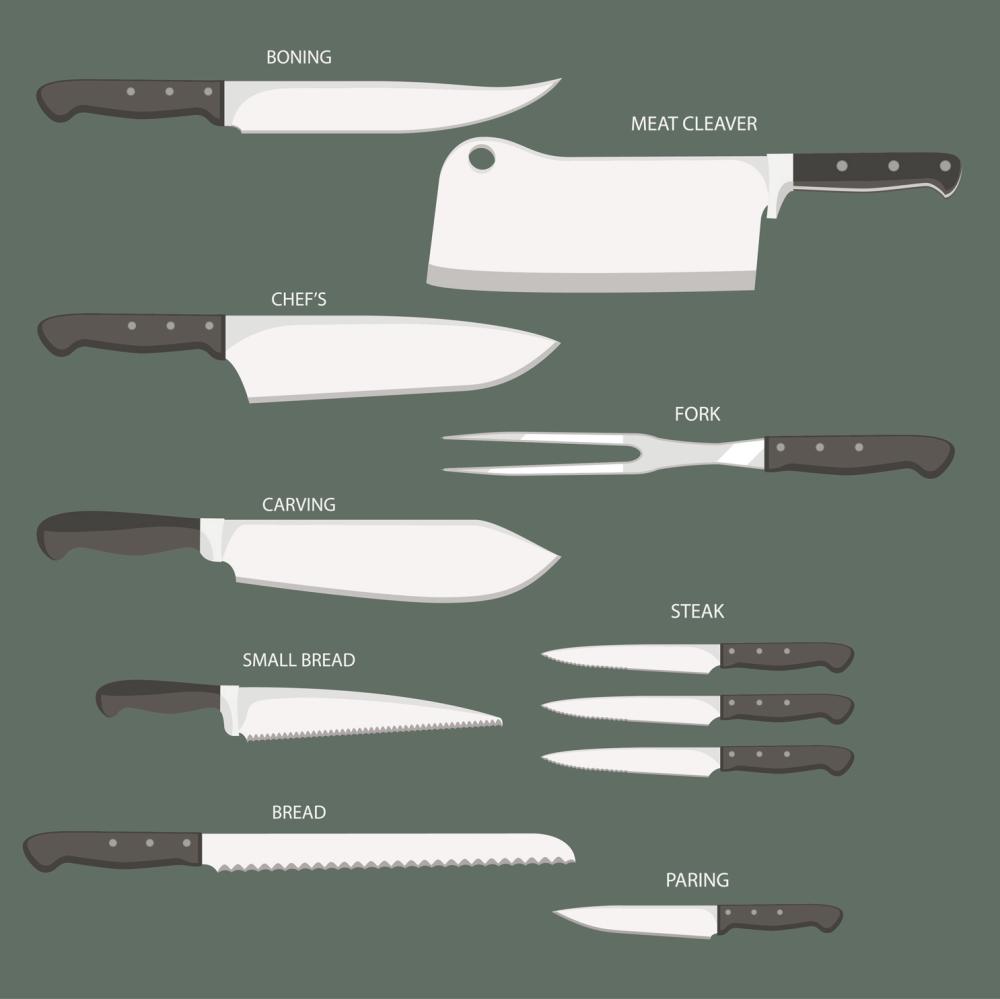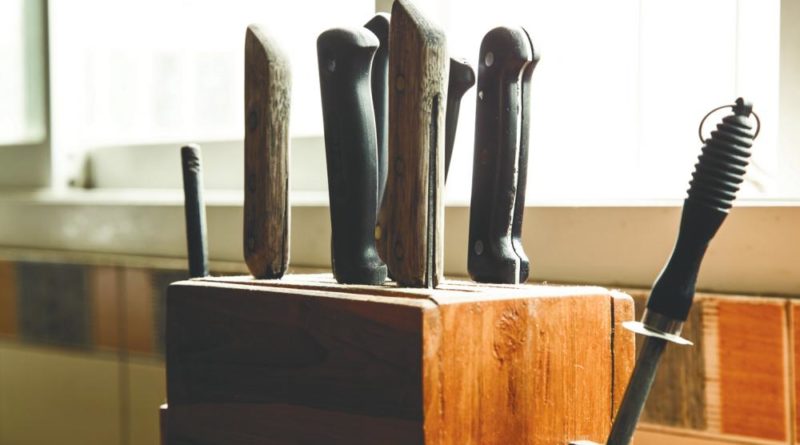HOUSEHOLD-LIFE+STYLE: A guide to kitchen knives
Learn to identify the different types of knives in your kitchen.
.
Find out what makes a kitchen knife, what other types of knives you need to up your cooking game
.
.
THEY say that a knife is an extension of the chef’s hand. As a home cook, if you want to up your cooking game and can only invest in one cooking tool, it would be a knife.
A good quality knife makes your life in the kitchen a lot easier and if you take care of it, it can last for a lifetime. Here are some things to consider when buying a new knife:
SPACE RESERVE FOR ADVERTISEMENT
/
Material
The most common steel used in knives are carbon steel and stainless steel. Carbon steel is generally made for rough use, and is usually harder. However, this makes it easier to re-sharpen. A high carbon steel knife oxidizes faster compared to a stainless steel one due to the low chromium content, and the process is called patina. Some people might prefer the aesthetics of a worn knife, so a carbon steel knife will require more care and proper drying after each use.
The different types of steel used as the knife’s blade will exhibit varying degrees of these hardness, toughness, wear resistance, corrosion resistance, and edge retention.
For example, a knife with a very high level of hardness maintains its edge for longer, and requires less sharpening. However, the downside is it is more brittle and might chip when it is dropped.
SPACE RESERVE FOR ADVERTISEMENT
/
Blade shape
In general, there are two types of blade profile. The Japanese knife is flatter along the edge and is ideal for up-and-down slicing, while a German knife has a rounder belly and is designed to cut with the rocking technique.
SPACE RESERVE FOR ADVERTISEMENT
/
Blade length
A larger knife can be good for cutting a lot of ingredients quickly, but if you have a small kitchen space, a small knife would work as well, and a smaller knife also allows more control.
The four main knives you can start with are:
SPACE RESERVE FOR ADVERTISEMENT
/
Chef’s knife
The chef’s knife is the most versatile knife. It can chop vegetables as well as cut meat. They are usually 20cm to 25cm long, and a 20cm one would be perfect for home use. The Japanese version of a chef’s knife is called a Santoku knife. It has a straight blade with small indentations along the side of the blade to help food slide off.
SPACE RESERVE FOR ADVERTISEMENT
/
Paring knife
Paring knives are usually smaller and are used for peeling, coring or hulling vegetables and fruits. The blade is usually thin, making it sharper and its small size makes it easier to control. Usually, paring knives are around 88mm, but nowadays, a lot of manufacturers interchange the name with utility knife, which is the longer version. Petty knives are the Japanese version. With a triangular blade, it is usually between 120mm and 180mm.
SPACE RESERVE FOR ADVERTISEMENT
/
Serrated knife
A serrated knife is used for soft food like bread and tomatoes. They are useful for food with a different exterior texture compared to its interior, and having a longer serrated knife allows you to cut through cakes and pastries easily. An offset serrated knife has a blade that is lower than its handle, which reduces the chance of hitting your knuckles on the cutting board after each slice.
SPACE RESERVE FOR ADVERTISEMENT
/
Chinese cleaver
The cleaver is usually the all-purpose knife found in most Malaysian homes, used to cut through bones, smash garlic, open durians or cut through hard-skinned vegetables like pumpkins.
SPACE RESERVE FOR ADVERTISEMENT
/
Taking care of your knife
Even if you buy an expensive Japanese knife, if you never take care of it, all the chopping, mincing, slicing, and dicing will slowly dull the blade. Just like no piano can go years without needing to be tuned, not even the best knife stays sharp forever.
If you feel resistance when you slice, your knife isn’t sharp enough and you’re not getting the most out of your tool. Using a dull blade can be even more dangerous, because it requires more pressure to cut, increasing the chances of the knife slipping.
A whetstone or sharpening stone is usually used to sharpen knives. It might take some getting used to, but practice makes perfect, and once you’ve mastered it, you’ll never have to battle with a blunt knife again.
Whetstones come with different grits, and a coarse grain with a lower number grinds the metal off quicker and a finer grain with a higher number smooths and refines the blade.
Usually, you start off with the coarser grain and go on to the finer grain. How you angle the blade will also depend on your knives.
If you want to sharpen a knife with chipped edges, you’ll need less than 1000 grit. For just general sharpening of a dull knife, all you need is a 1000 grit or 3000 grit.
For finishing and polishing, a 6000 grit is more than enough and you don’t really need any fancy stones to do the job.













